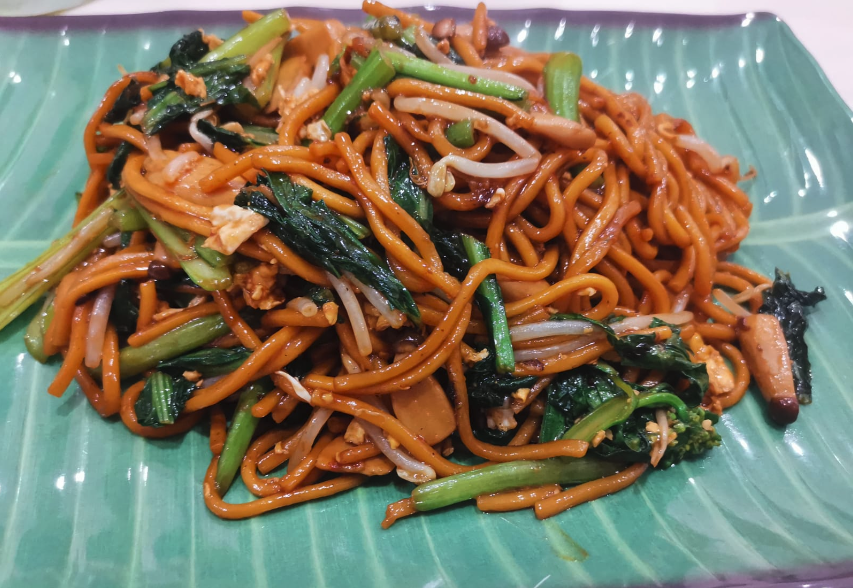Malaysian Delights
Fried Radish Cake: A Cantonese Classic and Cultural Legacy

The origin of fried radish cake is deeply rooted in the culinary culture of Guangdong, carrying the historical development of Cantonese dim sum and street snacks. It reflects the wisdom of Southern Chinese in utilizing simple ingredients to create delicious dishes.
Origin Background
The history of radish cake dates back to the Ming and Qing dynasties, originally a traditional pastry in the Guangdong region, commonly seen during festivals or ceremonial occasions. White radish, a cheap winter ingredient, was mixed with rice flour to make the cake, which was easy to preserve and could fill the stomach, making it a popular food in every household at the time.
The Birth of Fried Radish Cake
The steamed radish cake is cooled, cut into pieces, and then stir-fried, becoming a common breakfast or snack in households. This cooking method likely originated in the working-class families of Guangdong, aiming to enhance the flavor of leftover radish cake.
Cultural Spread
- Influence of Cantonese Tea Houses: In tea house culture, radish cake, as a "fried item," is highly favored. Chefs added various seasonings and ingredients to enhance the flavor.
- Evolution in Southeast Asia: Chinese immigrants brought radish cake to Singapore and Malaysia, leading to variations such as Singapore's "Black Fried Radish Cake" and Malaysia's "White Fried Radish Cake."
Modern Significance
Fried radish cake is not only a dim sum dish but also represents the creativity and adaptability of Chinese culinary culture. Whether enjoyed in tea houses or street food stalls, it reflects the heritage and innovation of Chinese food culture.
Fried Noodles: Historical Legacy and Cultural Integration

Origin and History
- Ancient Origins: The history of Chinese noodles dates back over 4,000 years. Fried noodles likely originated in the north as a preservation and flavor-enhancing method.
- Song and Yuan Dynasties: The rise of commerce and street food culture led to fried noodles becoming a fast food staple.
- Ming and Qing Dynasties: Fried noodles became widely popular in homes and street stalls, developing into various regional versions.
Regional Flavours and Global Spread
- Southeast Asian Flavours: Chinese immigrants introduced "Hokkien Fried Noodles," "Char Kway Teow," and "Mee Goreng," adding local spices and sauces.
- Evolution in Western Countries: Fried noodles adapted into "Chinese Chow Mein," incorporating local vegetables and sauces.
Cultural Significance
Fried noodles symbolize cultural exchange and adaptability. From Chinese street food to global cuisine, they have won the favor of people worldwide.
Curry Puff: A Fusion of History and Culture

Origin and History
- Originated from India's Samosa: The curry puff’s roots trace back to Indian samosas, which spread through trade and cultural exchanges.
- Adaptation in Southeast Asia: Influenced by British colonizers and Indian immigrants, the local version of curry puffs became smaller and included coconut milk and mashed potatoes.
Regional Characteristics
- Malaysia and Singapore: Local curry puffs have a buttery, flaky pastry with a curry filling, often containing mashed potatoes and hard-boiled eggs.
Modern Significance
The curry puff represents the fusion of Asian and European food cultures, serving as a symbol of historical and cultural exchanges.
Spring Rolls: A Classic Food of Tradition and Cultural Fusion

Origin and History
- Early Origins: The Han Dynasty "spring pancake" was made to celebrate the spring harvest.
- Song Dynasty: Fried versions of spring rolls became popular.
- Ming and Qing Dynasties: Spring rolls became a festive food symbolizing good fortune and prosperity.
Regional Variations and Cultural Transmission
- Spring Roll Versions Across China: North China has lighter versions, Guangdong specializes in crispy fried spring rolls, and Fujian offers a sweet variation.
- Southeast Asian Variations: Vietnam’s fresh and fried rolls, the Philippines’ "Lumpia," and other adaptations highlight regional influences.
- Western Adaptations: Spring rolls have become a staple in Chinese restaurants worldwide.
Modern Significance
Spring rolls symbolize renewal and cultural fusion. Their adaptability has made them a global favorite, showcasing the inclusiveness of food culture.
